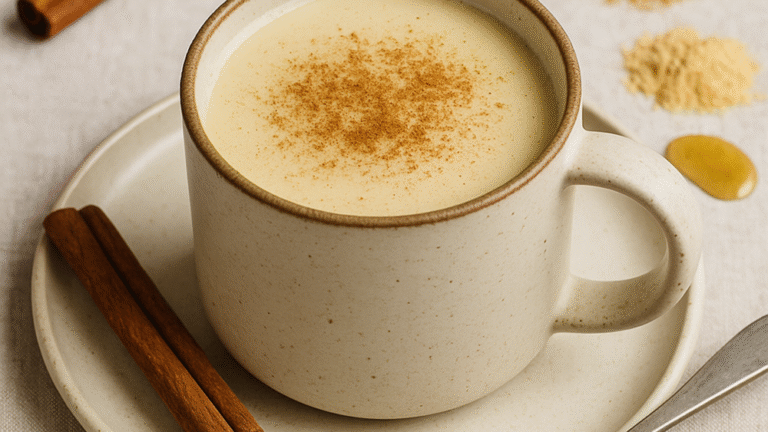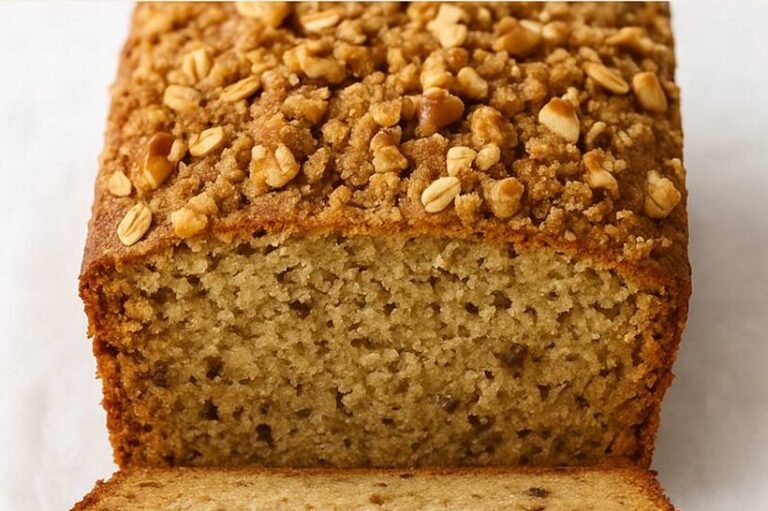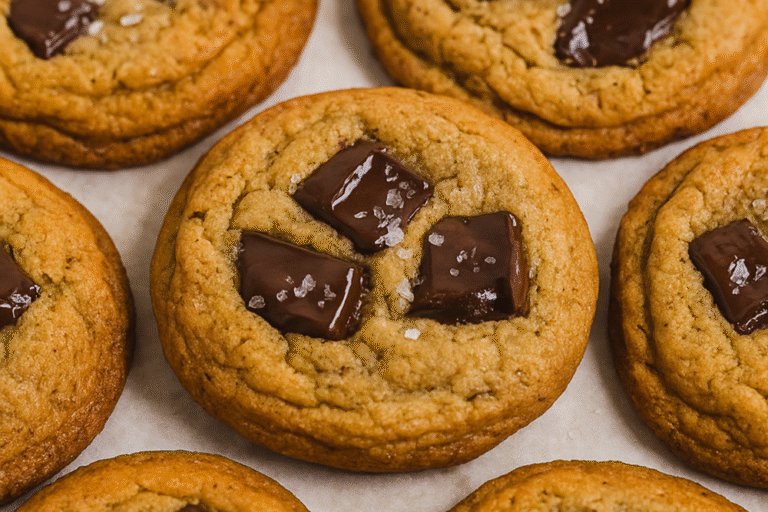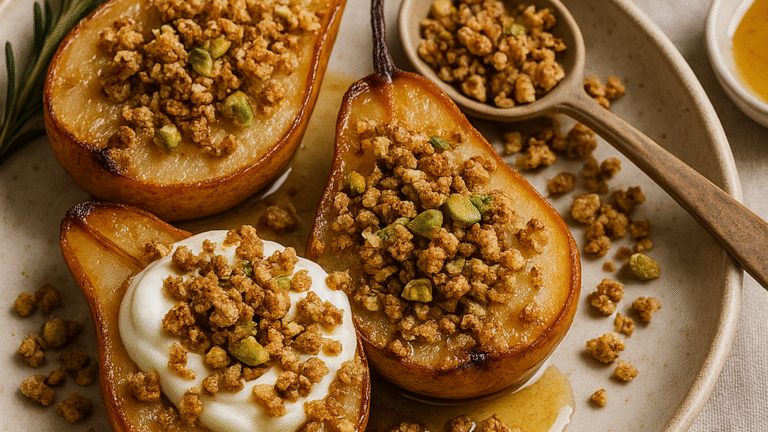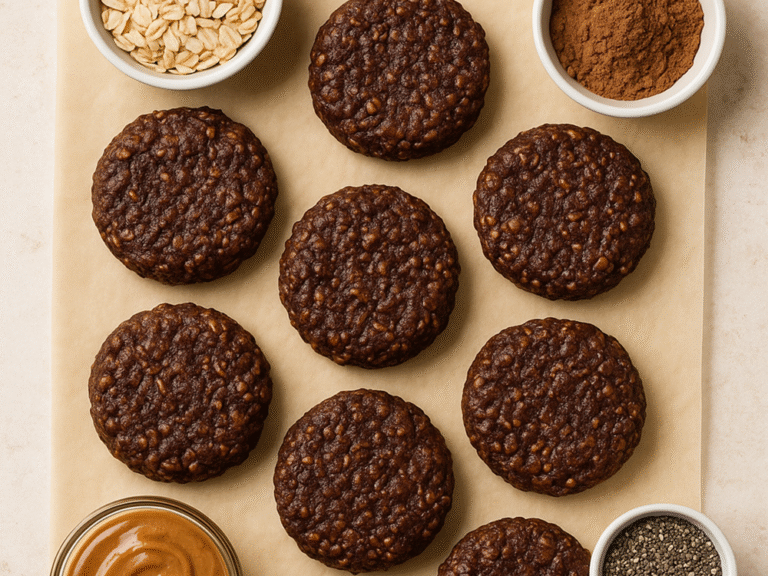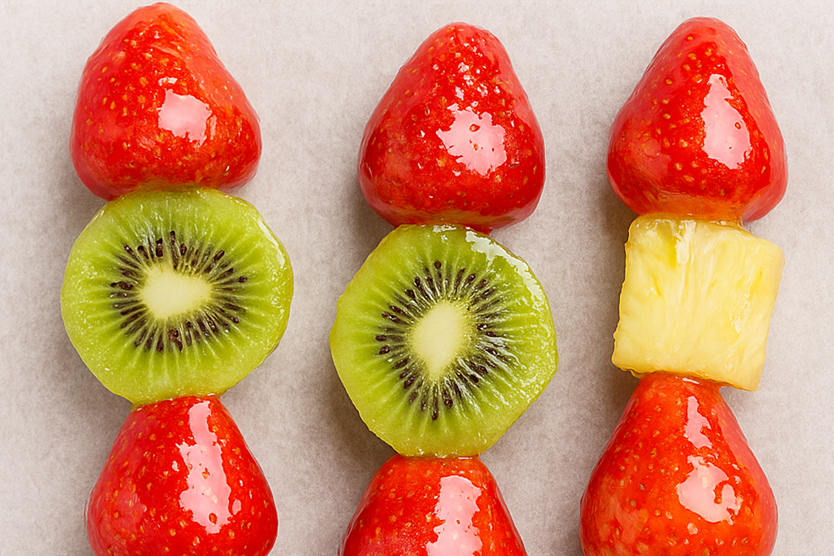
Introduction to Tanghulu
Have you ever come across some glossy, jewel-like fruits on a stick and wondered what it was?
This beautiful little creation is called Tanhulu. Tanhulu is a traditional Chinese street snack that is taking new generations by storm. Growing quickly in popularity, this sweet treat has the kids raving about eating their much-needed fruits!
History Behind Tanghulu
Tanghulu has been around for centries. Also referred to as “bing tanghulu” (冰糖葫芦), this recipe dates back about 800 years!
Traditionally sold by street vendors near colleges and schools, Tanghulu was initially made with sour Chinese hawthorn berries. The hawthorn berries were skewered on bamboo sticks and then coated in hardened sugar syrup, resulting in a tart-sweet taste. An old Chinese folk tale claims the sugar-coated hawthorn berries were first used as a medicine for the late Queen Hawng. The queen was instructed to eat the sugar berries before meals, which resulted in the resolution of her health issues. Whether the folk tale remains true or not, the popularity of Tanghulu skyrocketed throughout the mainland. As time progressed, the berries were gradually replaced with different fruits, strawberries and grapes being the most common.
I first came across Tanghulu while living in South Korea just as it was becoming popular, thanks to the younger Korean generation.
Today, you may see Tanghulu being made with more tropical fruits, such as kiwi and pineapple. Some people will go as far as adding edible glitter in the sugar to make the treat even more visually appealing and fun!
To read more on Tanghulu, check out this article Ongoing Popularity Across Generations by the Yonsei Annals.
Tips & Tricks
- Temperature is essential in this recipe. Using a candy thermometer can help gauge sugar temperatures more accurately.
- Mix it up! You can use almost any fruit with Tanghulu: grapes, blueberries, or mandarin slices work beautifully.
- Avoid humidity. Once the sugar is solid, you don’t want it to melt again! Be cautious of environmental humidity and moisture.
Shopping List
strawberries
kiwi
pineapple
sugar
bamboo skewers
parchment paper
Instructions
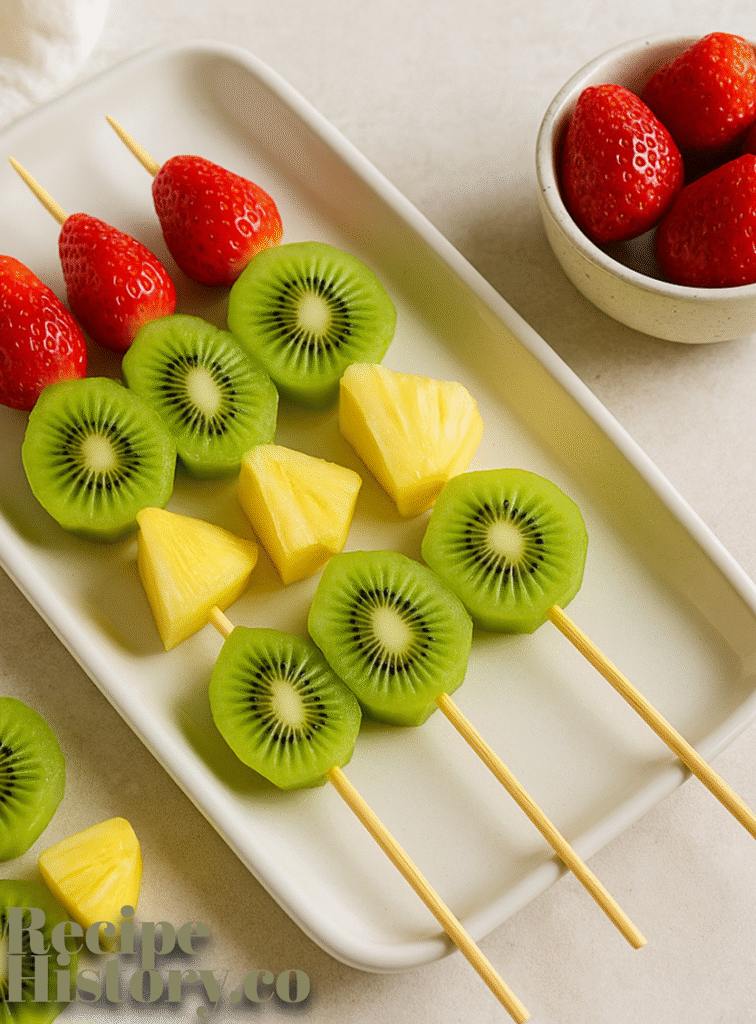
Prep the Fruit: Wash and thoroughly dry all your fruit. Moisture should be avoided to achieve a good sugar crackle. Skewer your fruits in any combo you like!
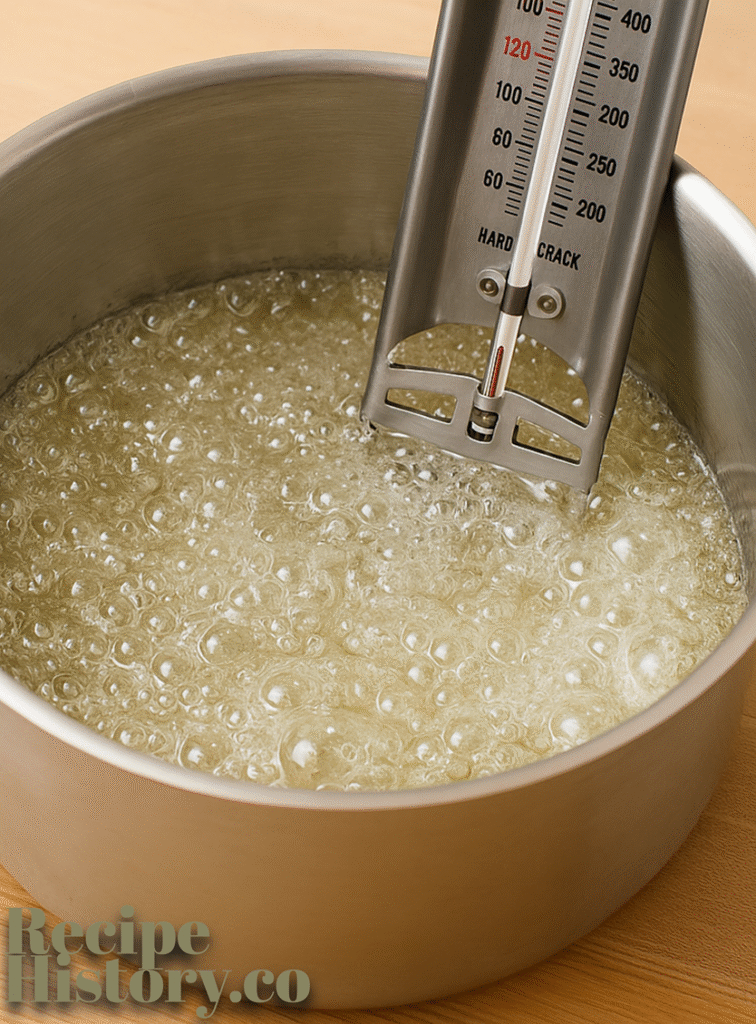
Make the Candy Syrup: In a small saucepan over medium heat, add the sugar and water. Stir gently until sugar dissolves, then stop stirring. Let the mixture boil until it reaches 300°F (hard crack stage). Use a candy thermometer for best results. A meat thermometer will work too.
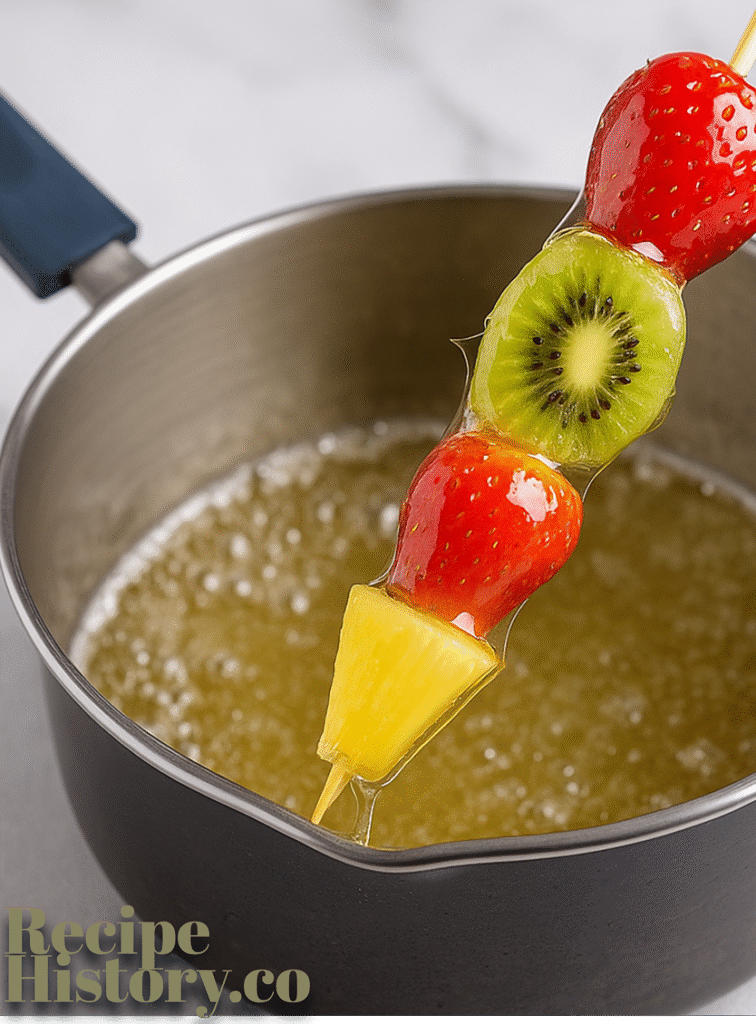
Dip & Twirl: Working quickly, dip each fruit skewer into the syrup and twist to coat. Let excess drip off, then place the skewer on parchment paper or a silicone mat to cool and harden.
Final Thoughts
Tanghulu is simple to make and fun to look at!
It is pretty healthy too (as long as you don’t overdo the sugar). This recipe is great for gatherings or birthday parties! It may end up being the topic of the evening. There is no question that this Chinese street food is one of the most popular choices among newer generations!
We hope you enjoy! Please consider sticking around for new recipes, at RecipeHistory.co!
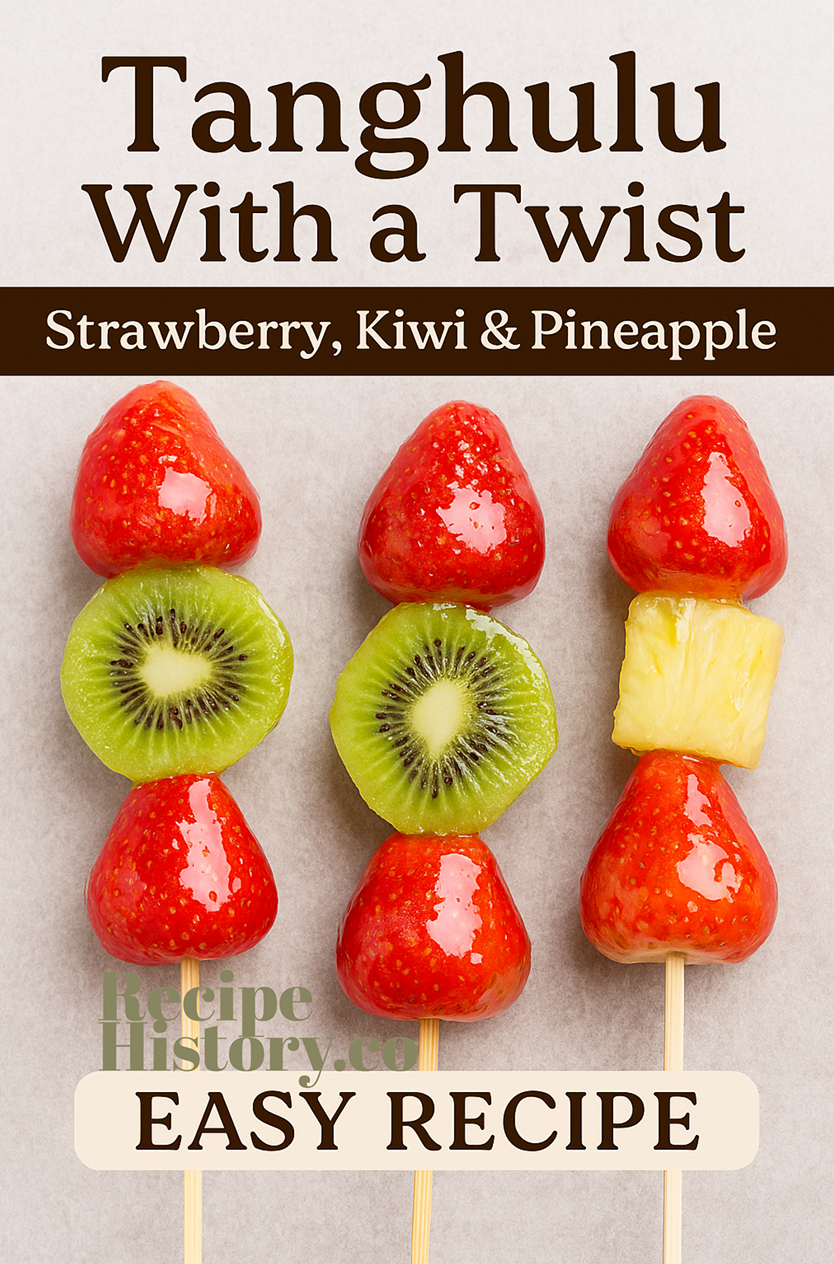
Tanghulu With a Twist
Ingredients
Method
- Prep the Fruit: Wash and thoroughly dry all your fruit. Moisture should be avoided to achieve a good sugar crackle. Skewer your fruits in any combo you like!
- Make the Candy Syrup: In a small saucepan over medium heat, add the sugar and water. Stir gently until sugar dissolves, then stop stirring. Let the mixture boil until it reaches 300°F (hard crack stage). Use a candy thermometer for best results. A meat thermometer will work too.
- Dip & Twirl: Working quickly, dip each fruit skewer into the syrup and twist to coat. Let excess drip off, then place the skewer on parchment paper or a silicone mat to cool and harden.
- Cool, Crack, Enjoy: Let the skewers cool for 10 minutes. When you bite in, you should hear that signature crack! This part makes tanghulu fun (and addictive).
Notes
- Bamboo skewers
- Parchment paper or silicone mat
This recipe yields 4–5 servings, depending on the size of the fruit and the skewer portions.
Nutritional Facts (per serving):
| Nutrient | Approximate Amount |
|---|---|
| Calories | 140–160 kcal |
| Total Fat | 0.3 g |
| Saturated Fat | 0 g |
| Cholesterol | 0 mg |
| Sodium | 0–5 mg |
| Total Carbohydrates | 38–40 g |
| – Sugars | 33–35 g |
| – Dietary Fiber | 2–3 g |
| Protein | 0.6 g |
| Vitamin C | 70–90% DV |
| Calcium | 1–2% DV |
| Iron | 1–2% DV |
⚠️ These values are estimates and may vary based on the exact size of fruits, amount of sugar coating, and serving size.

